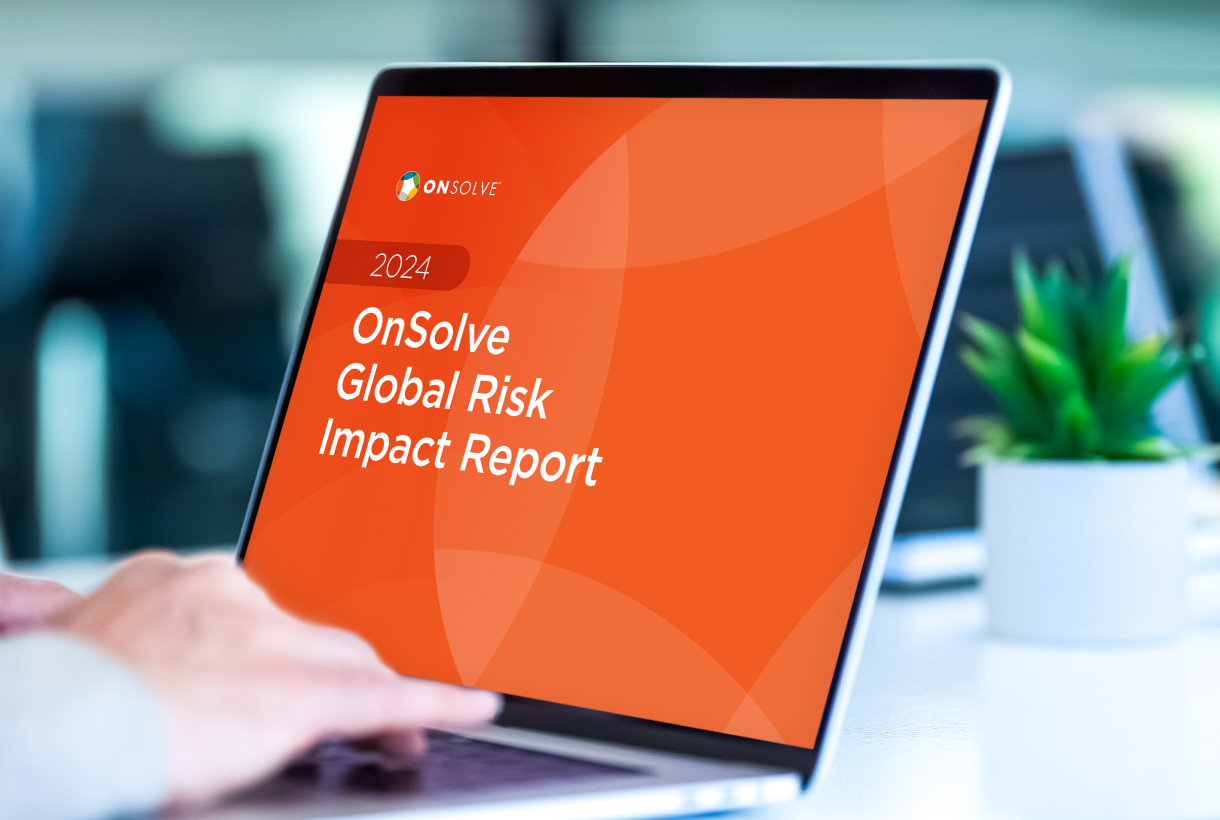Up to 10 physical threats can occur every minute, according to the 2023 OnSolve Global Risk Impact Report.
We see it in the headlines every day — risk is rapidly increasing, and organizations are encountering risk at nearly every turn. Yet few have a strong handle on preparedness.
The 2023 OnSolve Report found that C-suite executives lack the knowledge, budget or strategic approach to manage crises. And although almost every CEO surveyed has dealt with at least one physical threat in the last three years, most still struggle to prioritize and plan for potential threats. Furthermore, every CEO surveyed believes their organization will face a physical threat in 2023. Despite this, more than half of CEOs (60 percent) have no plan to address the most severe physical threats to their businesses.
Sooner or later, a critical event will impact organizations' people, places and property, and having the right data to make risk-based decisions can strengthen preparedness. As the C-suite considers how best to prepare, OnSolve identified the top rising threats to watch in 2023, how CEOs are responding to them and the potential business implications. We look at the types and frequency of events based on an analysis of over nine million events that occurred in 2021 and 2022, across 159 countries where our customers operate.
3 Rising Threats to Watch
Physical threats increased significantly in three categories, and C-suite executives should be paying attention.
- Extreme Weather: Overall, events increased 42 percent in the U.S. and 72 percent globally from 2021 to 2022. Yet, the alarming rise in number of earthquakes (up 945 percent in the U.S. and 1,964 percent globally) and winter storms/blizzards (up 216 percent in the U.S. and 303 percent globally) should be a catalyst for planning initiatives.
- Infrastructure and technology failures: Power outages, explosions, structure collapses and technical disasters rose 807 percent in the U.S. and 688 percent globally, putting business continuity at risk.
- Transportation accidents. Aircraft, maritime, rail and road incidents rose 296 percent in the U.S. and 211 percent globally. Such events can have a wide impact, disrupting travel and supply chains.
These increases don’t explain the full impact of a critical event. None of these rising threats stands alone. Each has the potential to create a ripple effect across an organization and the communities it operates in. For instance, a blizzard on a major national highway can halt traffic, stranding drivers in freezing temperatures for many hours. Travelers would be unable to reach their destinations, putting many at risk of hypothermia and medical emergencies as they run out of fuel and rescue teams are unable to reach them.
Understanding the ripple effect that physical threats have — from impacting communities and workers to operational downtime and supply chain delays — is one of the most challenging components facing leaders today.
Every threat can become a cascading, dynamic risk. Learn how making the shift from risk prevention to resilience management can help organizations navigate the unexpected impacts of physical threats and strengthen preparedness.2024 Global Risk Impact Report
4 Takeaways the C-suite Can’t Afford to Ignore
Although physical threats might be inevitable, the loss and disruption they cause don’t have to be. When managing risk is a strategic imperative, C-suite executives can build organizational resilience and safeguard their people and assets.
The report identifies four takeaways the C-suite should consider as they prioritize risk preparedness and planning among their corporate initiatives.
1. Employees and boards alike are concerned about physical threats.
Both employees and corporate boards are taking notice of physical threats. More than half (51%) say employees have expressed more concerns about physical safety since the start of the COVID-19 pandemic. Failure to address these concerns could make it even more difficult to attract and retain employees — something that’s already a challenge in the tight labor market.
Notably, board members are also worried. As physical threats become more frequent, boards are more aware of the business risk — and noticing the gaps in preparation. Nearly all (99%) of CEOs say their boards have asked about plans to combat physical threats.
2. Resilient organizations have a competitive advantage.
Investment in risk management planning can help organizations anticipate crises and mitigate the impact of the inevitable. Imagine the outcome if the executive team anticipates and plans for a potential hurricane and subsequent flooding of a key facility. Simply having the capabilities to switch operations to another location will allow business to continue — giving a leg up over the competition.
3. A lot can be learned from cybersecurity success stories.
CEOs can turn to cybersecurity leaders to help fortify their plans. These executives have been at the forefront of threat mitigation efforts and have experience using technology to gain a line of sight into threats. Although AI-powered technology can do the same for physical threats, only 26 percent of CEOs say they’ve invested in it to protect people and operations from physical threats (though an additional 48 percent are prioritizing such an investment this year). Tapping into lessons learned from cybersecurity can help the organization accelerate implementation of critical event management technology to gain a clear, accurate view of the risk landscape.
4. CEOs must ensure ownership across the C-suite — or put the business at risk.
Although 38 percent of CEOs say preparing for physical threats is a top priority, 60 percent say they have no plan to prepare to address all of their most severe physical threats. Failure to identify and plan for all physical threats is risky business. C-suite executives are responsible for the success of their organization and the safety of their people. As the success with cybersecurity shows, when risk mitigation and crisis response efforts come from the top, businesses are better able to stay ahead of threats.
To take a deeper look at the research behind these findings, download the full 2023 OnSolve Global Risk Impact Report.
The 2023 OnSolve Global Risk Impact Report outlines the top risks that have occurred as a percentage of all events OnSolve detected from January 1, 2021, to December 31, 2022, that had the potential to impact its customers worldwide. The data in this report was gathered using OnSolve Risk Intelligence, an AI-powered technology that monitors over 50 risk categories of physical threats across 159 countries in real time. OnSolve Risk Intelligence detected more than nine million global events, or physical threats, from 2021 to 2022, using AI and analyst-vetted information pulled from data sources that include local fire, police and emergency medical services departments; weather reports and alerts from government and non-government, verified sources; federal government agencies such as the Federal Bureau of Investigation, Department of Homeland Security and other crisis management entities; local, national and international news; and critical event reports from verified social media feeds. OnSolve Risk Intelligence monitors global physical threats that have an impact on its 30,000 customer base, which consists of more than half of the Fortune 100, nearly half of the Fortune 500 and 10,000 communities in the U.S., including state, regional, local and federal entities. OnSolve programmatically maps events to locations worldwide, determining which part of an organization might be at risk. This report aggregates to a country-level view year over year of the physical threats specific to our customers’ people and operations across their offices, plants, warehouses and office locations, and while traveling worldwide. It highlights the most significant risks impacting businesses and governments when 2022 is compared to 2021.


